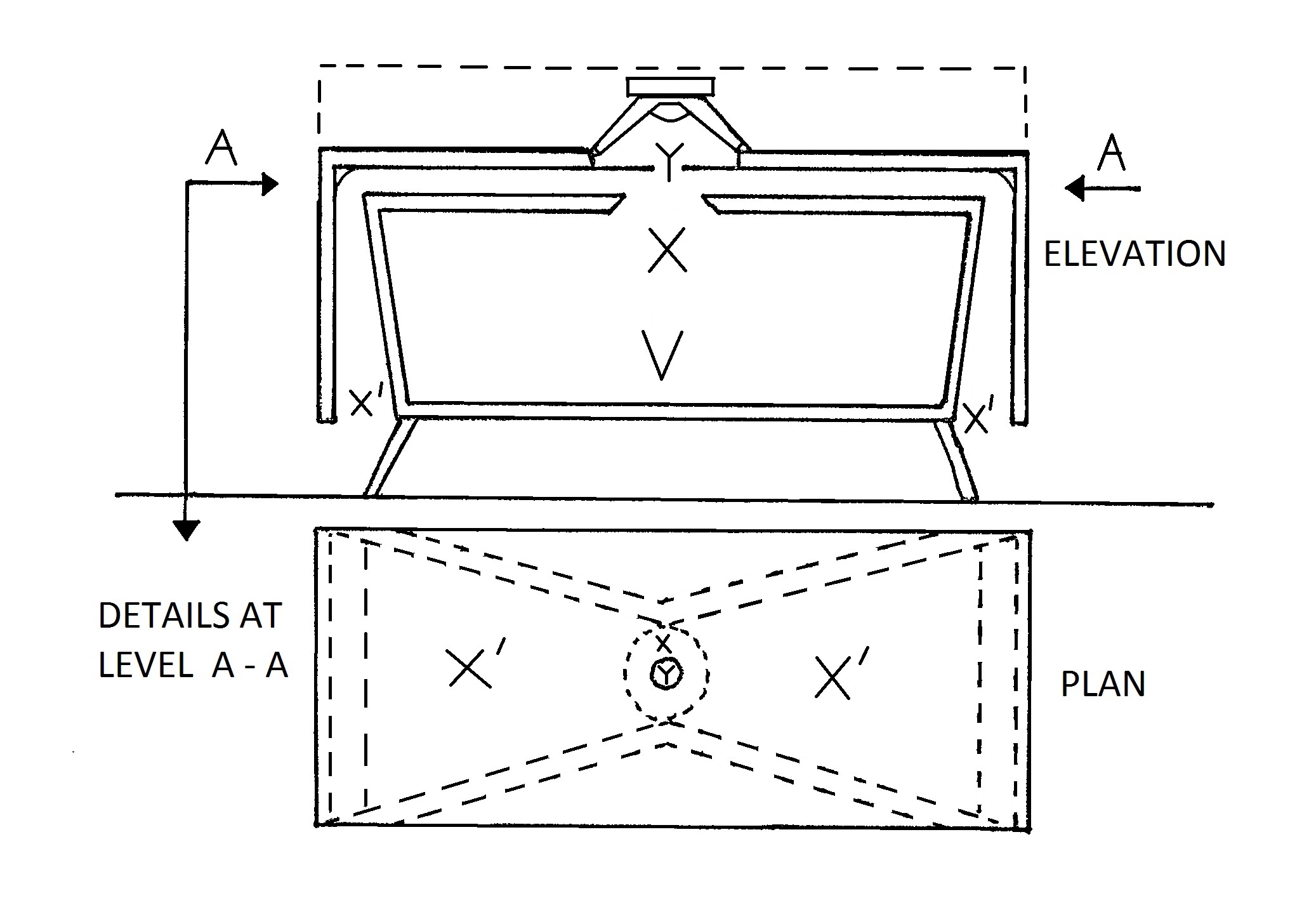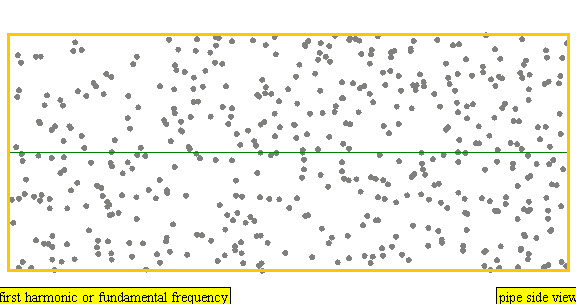|
Acoustics
Acoustics is a branch of physics that deals with the study of mechanical waves in gases, liquids, and solids including topics such as vibration, sound, ultrasound and infrasound. A scientist who works in the field of acoustics is an acoustician while someone working in the field of acoustics technology may be called an Acoustical engineering, acoustical engineer. The application of acoustics is present in almost all aspects of modern society with the most obvious being the audio and noise control industries. Hearing (sense), Hearing is one of the most crucial means of survival in the animal world and speech is one of the most distinctive characteristics of human development and culture. Accordingly, the science of acoustics spreads across many facets of human society—music, medicine, architecture, industrial production, warfare and more. Likewise, animal species such as songbirds and frogs use sound and hearing as a key element of mating rituals or for marking territories. Art, ... [...More Info...] [...Related Items...] OR: [Wikipedia] [Google] [Baidu] [Amazon] |
Acoustical Engineering
Acoustical engineering (also known as acoustic engineering) is the branch of engineering dealing with sound and vibration. It includes the application of acoustics, the science of sound and vibration, in technology. Acoustical engineers are typically concerned with the design, analysis and control of sound. One goal of acoustical engineering can be the reduction of unwanted noise, which is referred to as noise control. Unwanted noise can have significant impacts on animal and human health and well-being, reduce attainment by students in schools, and cause hearing loss. Noise control principles are implemented into technology and design in a variety of ways, including control by redesigning sound sources, the design of noise barriers, sound absorbers, suppressors, and buffer zones, and the use of hearing protection (earmuffs or earplugs). Besides noise control, acoustical engineering also covers positive uses of sound, such as the use of ultrasound in medicine, programming digit ... [...More Info...] [...Related Items...] OR: [Wikipedia] [Google] [Baidu] [Amazon] |
Architectural Acoustics
Architectural acoustics (also known as building acoustics) is the science and engineering of achieving a good sound within a building and is a branch of acoustical engineering. The first application of modern scientific methods to architectural acoustics was carried out by the American physicist Wallace Sabine in the Fogg Museum lecture room. He applied his newfound knowledge to the design of Symphony Hall, Boston. Architectural acoustics can be about achieving good speech intelligibility in a theatre, restaurant or railway station, enhancing the quality of music in a concert hall or recording studio, or suppressing noise to make offices and homes more productive and pleasant places to work and live in. Architectural acoustic design is usually done by acoustic consultants. Building skin envelope This science analyzes noise transmission from building exterior envelope to interior and vice versa. The main noise paths are roofs, eaves, walls, windows, door and penetra ... [...More Info...] [...Related Items...] OR: [Wikipedia] [Google] [Baidu] [Amazon] |
Robert Bruce Lindsay
Robert Bruce Lindsay (1 January 1900 – 2 March 1985) was an American physicist and physics professor, known for his prolific authorship of physics books in acoustics, and historical and philosophical analyses of physics. Biography R(obert) Bruce Lindsay's January 1, 1900, birth date hailed the beginning of the last year of the 19th century. At the age of 20, he received both a BA and an MS in physics from Brown University. Before receiving his Ph.D. for atomic models of alkali metals from Massachusetts Institute of Technology in 1924, he spent the 1922–23 academic year as a Fellow of The American-Scandinavian Foundation at the University of Copenhagen under Niels Bohr and Hans Kramers. Lindsay and his wife Rachel translated Kramers’ book, ''The Atom and the Bohr Theory of its Structure'', in 1923, receiving approximately $125, on which they toured Europe. Lindsay went to Yale University in 1923 as instructor in physics, and was promoted to assistant professor in 192 ... [...More Info...] [...Related Items...] OR: [Wikipedia] [Google] [Baidu] [Amazon] |
Sound
In physics, sound is a vibration that propagates as an acoustic wave through a transmission medium such as a gas, liquid or solid. In human physiology and psychology, sound is the ''reception'' of such waves and their ''perception'' by the brain. Only acoustic waves that have frequency, frequencies lying between about 20 Hz and 20 kHz, the audio frequency range, elicit an auditory percept in humans. In air at atmospheric pressure, these represent sound waves with wavelengths of to . Sound waves above 20 kHz are known as ultrasound and are not audible to humans. Sound waves below 20 Hz are known as infrasound. Different animal species have varying hearing ranges, allowing some to even hear ultrasounds. Definition Sound is defined as "(a) Oscillation in pressure, stress, particle displacement, particle velocity, etc., propagated in a medium with internal forces (e.g., elastic or viscous), or the superposition of such propagated oscillation. (b) Auditory sen ... [...More Info...] [...Related Items...] OR: [Wikipedia] [Google] [Baidu] [Amazon] |
Noise Control
Noise control or noise mitigation is a set of strategies to reduce noise pollution or to reduce the impact of that noise, whether outdoors or indoors. Overview The main areas of noise mitigation or abatement are: transportation noise control, architecture, architectural design, urban planning through zoning codes, and industrial noise, occupational noise control. Roadway noise and aircraft noise are the most pervasive sources of environmental noise. Social activities may generate noise levels that consistently affect the health of populations residing in or occupying areas, both indoor and outdoor, near entertainment venues that feature amplified sounds and music that present significant challenges for effective noise mitigation strategies. Multiple techniques have been developed to address interior sound levels, many of which are encouraged by local building codes. In the best case of project designs, planners are encouraged to work with design engineers to examine trade-offs o ... [...More Info...] [...Related Items...] OR: [Wikipedia] [Google] [Baidu] [Amazon] |
Physics
Physics is the scientific study of matter, its Elementary particle, fundamental constituents, its motion and behavior through space and time, and the related entities of energy and force. "Physical science is that department of knowledge which relates to the order of nature, or, in other words, to the regular succession of events." It is one of the most fundamental scientific disciplines. "Physics is one of the most fundamental of the sciences. Scientists of all disciplines use the ideas of physics, including chemists who study the structure of molecules, paleontologists who try to reconstruct how dinosaurs walked, and climatologists who study how human activities affect the atmosphere and oceans. Physics is also the foundation of all engineering and technology. No engineer could design a flat-screen TV, an interplanetary spacecraft, or even a better mousetrap without first understanding the basic laws of physics. (...) You will come to see physics as a towering achievement of ... [...More Info...] [...Related Items...] OR: [Wikipedia] [Google] [Baidu] [Amazon] |
Ultrasound
Ultrasound is sound with frequency, frequencies greater than 20 Hertz, kilohertz. This frequency is the approximate upper audible hearing range, limit of human hearing in healthy young adults. The physical principles of acoustic waves apply to any frequency range, including ultrasound. Ultrasonic devices operate with frequencies from 20 kHz up to several gigahertz. Ultrasound is used in many different fields. Ultrasonic devices are used to detect objects and measure distances. Ultrasound imaging or sonography is often used in medicine. In the nondestructive testing of products and structures, ultrasound is used to detect invisible flaws. Industrially, ultrasound is used for cleaning, mixing, and accelerating chemical processes. Animals such as bats and porpoises use ultrasound for locating prey and obstacles. History Acoustics, the science of sound, starts as far back as Pythagoras in the 6th century BC, who wrote on the mathematical properties of String instrument ... [...More Info...] [...Related Items...] OR: [Wikipedia] [Google] [Baidu] [Amazon] |
Infrasonic
Infrasound, sometimes referred to as low frequency sound or incorrectly subsonic (subsonic being a descriptor for "less than the speed of sound"), describes sound waves with a frequency below the lower limit of human audibility (generally 20 Hz, as defined by the ANSI/ASA S1.1-2013 standard). Hearing becomes gradually less sensitive as frequency decreases, so for humans to perceive infrasound, the sound pressure must be sufficiently high. Although the ear is the primary organ for sensing low sound, at higher intensities it is possible to feel infrasound vibrations in various parts of the body. The study of such sound waves is sometimes referred to as infrasonics, covering sounds beneath 20 Hz down to 0.1 Hz (and rarely to 0.001 Hz). People use this frequency range for monitoring earthquakes and volcanoes, charting rock and petroleum formations below the earth, and also in ballistocardiography and seismocardiography to study the mechanics of the human cardiovascul ... [...More Info...] [...Related Items...] OR: [Wikipedia] [Google] [Baidu] [Amazon] |
Infrasound
Infrasound, sometimes referred to as low frequency sound or incorrectly subsonic (subsonic being a descriptor for "less than the speed of sound"), describes sound waves with a Audio frequency, frequency below the lower limit of human audibility (generally 20 Hertz, Hz, as defined by the ANSI/ASA S1.1-2013 standard). Hearing becomes gradually less sensitive as frequency decreases, so for humans to perceive infrasound, the sound pressure must be sufficiently high. Although the ear is the primary organ for sensing low sound, at higher intensities it is possible to feel infrasound vibrations in various parts of the body. The study of such sound waves is sometimes referred to as infrasonics, covering sounds beneath 20 Hz down to 0.1 Hz (and rarely to 0.001 Hz). People use this frequency range for monitoring earthquakes and volcanoes, charting rock and petroleum formations below the earth, and also in ballistocardiography and seismocardiography to study the mechanics of ... [...More Info...] [...Related Items...] OR: [Wikipedia] [Google] [Baidu] [Amazon] |
Ultrasound
Ultrasound is sound with frequency, frequencies greater than 20 Hertz, kilohertz. This frequency is the approximate upper audible hearing range, limit of human hearing in healthy young adults. The physical principles of acoustic waves apply to any frequency range, including ultrasound. Ultrasonic devices operate with frequencies from 20 kHz up to several gigahertz. Ultrasound is used in many different fields. Ultrasonic devices are used to detect objects and measure distances. Ultrasound imaging or sonography is often used in medicine. In the nondestructive testing of products and structures, ultrasound is used to detect invisible flaws. Industrially, ultrasound is used for cleaning, mixing, and accelerating chemical processes. Animals such as bats and porpoises use ultrasound for locating prey and obstacles. History Acoustics, the science of sound, starts as far back as Pythagoras in the 6th century BC, who wrote on the mathematical properties of String instrument ... [...More Info...] [...Related Items...] OR: [Wikipedia] [Google] [Baidu] [Amazon] |
Harmonic Partials On Strings
In physics, acoustics, and telecommunications, a harmonic is a sinusoidal wave with a frequency that is a positive integer multiple of the ''fundamental frequency'' of a periodic signal. The fundamental frequency is also called the ''1st harmonic''; the other harmonics are known as ''higher harmonics''. As all harmonics are Periodic function, periodic at the fundamental frequency, the sum of harmonics is also periodic at that frequency. The set of harmonics forms a ''harmonic series (music), harmonic series''. The term is employed in various disciplines, including music, physics, acoustics, electronic power transmission, radio technology, and other fields. For example, if the fundamental frequency is 50 Hertz, Hz, a common alternating current, AC power supply frequency, the frequencies of the first three higher harmonics are 100 Hz (2nd harmonic), 150 Hz (3rd harmonic), 200 Hz (4th harmonic) and any addition of waves with these frequencies is periodic at 50& ... [...More Info...] [...Related Items...] OR: [Wikipedia] [Google] [Baidu] [Amazon] |
Harmonic
In physics, acoustics, and telecommunications, a harmonic is a sinusoidal wave with a frequency that is a positive integer multiple of the ''fundamental frequency'' of a periodic signal. The fundamental frequency is also called the ''1st harmonic''; the other harmonics are known as ''higher harmonics''. As all harmonics are periodic at the fundamental frequency, the sum of harmonics is also periodic at that frequency. The set of harmonics forms a '' harmonic series''. The term is employed in various disciplines, including music, physics, acoustics, electronic power transmission, radio technology, and other fields. For example, if the fundamental frequency is 50 Hz, a common AC power supply frequency, the frequencies of the first three higher harmonics are 100 Hz (2nd harmonic), 150 Hz (3rd harmonic), 200 Hz (4th harmonic) and any addition of waves with these frequencies is periodic at 50 Hz. In music, harmonics are used on string instruments and ... [...More Info...] [...Related Items...] OR: [Wikipedia] [Google] [Baidu] [Amazon] |











